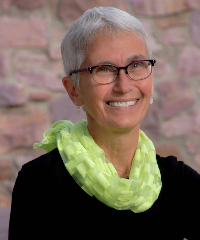Science Cafe Posts - Mission Mosquito
GLOBE Breadcrumb
- Home >
- Mission Mosquito >
- Science Cafe Posts
Banner and NavBar
Science Cafe Posts
Please complete your formal training to unlock the ability to create GLOBE Blogs.
See Training > User Roadmaps in the site navigation to learn more.Blogs

Purpose The purpose of this experiment is to determine the prevalence of two characteristics of containers in attracting more mosquitos. I wanted to measure if mosquitos prefer to lay their eggs in locations with more shade as well as how the color of the trap, dark or clear, can also impact this preference. Methods Since Aedes mosquitos, which are the most common type of mosquitos in San...

Purpose: The purpose of this experiment is to determine the prevalence of each container’s exposure to sunlight in attracting more mosquitos. My intent was to measure the difference in the preferences of female mosquitoes to lay their eggs in locations with more or less shade. Methods: After some research, I was able to deduce that the most common mosquitoes in North Georgia...

Introduction: In my trap experiment, I decided to test the attractiveness of different bait types to pregnant female mosquitos. I was interested to discover what conditions drew in mosquitos the most. Experimental Design: I constructed 4 mosquito traps using plastic tupperware containers and filled them each with about 400ml of tap water. I then introduced a different bait...

Purpose: The purpose of this experiment is to determine the type of bait and the container size that attracts the greatest number of mosquitos. I hoped to understand whether the amount of water and the bait in the water made a difference in the oviposition of female mosquitos. Setup: I used 6 different buckets of 3 different sizes and filled them with two types of bait- initially sugar water...

My experiment aims to find the effects of saltwater concentration on mosquito breeding. WEEK ONE- June 13-18, 2022 Hypothesis- Mosquitos are more likely to breed in water with the least amount of salt. All the traps were set up in open Tupperware containers containing- 2.5 cups of tap water, 1 tablespoon of dog kibble, and either 0, 1, or 3 teaspoons of water, depending on which...

I’m located in Reno, Nevada. Reno’s climate is semiarid and Nevada is the driest state in the US. Additionally, Reno’s daily temperatures vary significantly: June’s average temperature high is 29 degrees celsius and its low is 10 degrees Celsius, similarly July’s average temperature high is 34 degrees and its low is 13 degrees celsius. In contrast, mosquitoes tend to breed best at around 29...

Experiment 1: For my first experiment, I tested the effects of water color on mosquito oviposition. Materials: - Three 1.25-liter bottles - Three bottles of food coloring (yellow, green, and blue) - Three rocks - Three paint stirring sticks - Nine dog treat pebbles - Three cups of water Experimental Design: After reading articles such as "New Study Shows Mosquitoes are Attracted to...

I decided to have two controls for my experiment: plain water and sugar water. Since I am testing how mosquitoes react to flowers; specifically, the number of eggs I collect, I wanted to get more variant data by having plain water and sugar water. After the first week of my experiment, I saw that many ants infested the sugar water (as anticipated), however, I found more mosquito larvae in the...

For 4 weeks this summer, much like other Earth Explorer interns, I built a few mosquito traps and set them out near my home within my AOI. I’m located in sunny Plano, Texas, near a creek. To set up my traps, I first bought 4 large, 2 Liter soda bottles, drank a small bit, and emptied the rest out. I know we shouldn’t eat in the lab, but let’s just say the experiment started after the bottles...

For my experiment, I decided to test the effect of sunlight and different colored traps on number of mosquito larvae. I started my experiment by gathering six white buckets. I then painted two of them red and two of them blue. I also covered each bucket with a sealant. After the buckets were prepared, I placed a white, red and blue bucket directly in the sunlight. The remaining three...
Showing 31 to 40 of 120 entries.





